Forget the fancy creams for a moment — your real skin glow actually starts in your kitchen.
Yes, you heard that right. No product, no matter how expensive, can replace what happens when you nourish your skin from the inside out. What you eat daily has a huge impact on your skin’s hydration, collagen production, and ability to repair itself. Your plate might be the real secret behind that healthy, radiant glow.
Why your diet matters more than you think
Most people treat skincare like a quick fix — slap on a serum, hope for magic. But your skin is like a mirror showing what’s happening inside your body. If you’re dealing with dry patches, breakouts, or fine lines, it might be your body telling you it needs certain nutrients or is under stress.
The skin is actually the largest organ you have — just as important as your heart or liver — and it needs good fuel to do its job. When you’re low on vitamins like C or Omega-3, your skin starts showing signs almost immediately: dryness, irritation, dullness.
Foods that truly feed your glow
Here’s the fun part — real food! Not powders or fancy supplements, but everyday foods packed with the nutrients your skin loves.
-
Avocados: They’re like nature’s moisturizer. Healthy fats + vitamin E help keep your skin soft and hydrated. Bonus — they taste amazing on toast or in smoothies.
-
Berries: Tiny but mighty! Blueberries, strawberries, raspberries — all bursting with antioxidants and vitamin C, which fight damage and help keep your skin firm.
-
Fatty fish: Think salmon, mackerel — rich in omega-3s that keep your skin plump and calm inflammation. If you’re vegetarian, flaxseeds and walnuts can do the trick.
-
Nuts and seeds: Almonds, sunflower seeds, walnuts — these little guys pack vitamin E and healthy fats to protect and repair your skin.
-
Tomatoes: Cooked tomatoes are your skin’s natural sunscreen thanks to lycopene, which also smooths wrinkles over time.
-
Sweet potatoes and carrots: Loaded with beta-carotene, which your body turns into vitamin A — great for glowing, warm-toned skin.
Don’t forget your greens!
Spinach, kale, and other leafy veggies help detox your body and calm redness or irritation. They’re packed with vitamins and iron that brighten your skin from within.
And drink up!
Watermelon, cucumber, coconut water — all full of hydration, which your skin desperately needs to look fresh and bouncy.
Top Natural Foods for Glowing Skin
| Food | Key Nutrients | Skin Benefits |
|---|---|---|
| Avocado | Healthy fats, Vit E | Deep hydration, reduced inflammation |
| Blueberries | Antioxidants, Vit C | Fights aging, boosts collagen |
| Salmon | Omega-3, Zinc, Vit E | Moisture lock, reduces redness |
| Almonds | Vitamin E, Healthy fats | Skin repair, sun protection |
| Tomatoes (cooked) | Lycopene | UV protection, improved texture |
| Carrots | Beta-carotene, Vit A | Skin renewal, natural warm tone |
| Spinach | Iron, Vit A, C, K | Detox support, tone evenness |
How to Build a Skin-Glow Diet Plan

Since we have discussed the most nutritious foods in favour of healthy skin, the next question to answer is how to organize them in the form of a daily menu. Individuals are conversant with the type of foods to take, but they are at loss on when and how frequently to take those foods that are skin-friendly.
That’s where a glow-boosting meal plan comes in.
Start Your Day Right: Morning Nutrition for Skin
Morning determines how your skin would look the whole day. Upon waking up, your body is in a moderate dehydrated condition and your digestive tract is starting to work. Thus, this is the right moment to stock up on vitamins, antioxidants, and water.
Morning Skin-Boosting Practices:
- Warm lemon water – Detoxifies, cleanses, and wakes up the gut
- Wet nuts or almonds – Provide vitamin E and good fatty acids
- Fresh fruit – Papaya, berries, or oranges are hydrating and contain antioxidants
- Eggs, oats, or yogurt – Protein-rich foods that assist with collagen protein synthesis
Midday Meals That Support Skin Repair
During lunch time, your digestive system and energy level is at its highest point. Heavier foods with deep nourishing and cellular repair effects are best consumed now.
What to Include in a Skin-Glowing Lunch:
- Leafy Greens (such as kale or spinach) – for cleansing
- Lean proteins (chicken, tofu, chickpeas) – for skin-building blocks
- Good carbs (brown rice, yams, quinoa) – for sustainable energy
- Antioxidants – Heat-cured vegetables such as beets, carrots, and peppers
Add-Ons That Make a Difference:
- Put flaxseeds on top of your salad
- Olive oil is another ingredient that should be used to dress your bowl to stay hydrated
- Add a tablespoon of hummus or avocado as a source of healthy fats
Hydration Strategy Throughout the Day
Drinking water is something most people ignore when it comes to skincare—your skin can literally not glow without it. A cell is very hydration-dependent, and your skin cells should not be the exception.
Due to lack of water, the skin becomes dull and sunken. As much as skincare products help on the external side, the dewy look also happens internally through hydration.
Daily Hydration Tips:
- Drink no less than 8–10 glasses of water per day
- For additional detoxification effects, add mint, cucumber, or lemon to your water
- Take potassium in coconut water or aloe vera juice as a natural skin healer
- Do not have excessive intake of caffeine — it dries your body out
Night Foods That Help Overnight Skin Repair
It is during your sleep when your skin goes into recovery. Circulation improves, collagen regenerates, and day-injuries are assisted to heal. However, it is only effective when your skin is equipped with what it should have in the way of raw materials.
So what you eat at dinner-time, and sometimes even before bedtime, can either promote or prevent this repair process.
Best Night-time Foods for Skin Glow:
Cottage cheese or Greek yogurt
→ They act as a source of protein and probiotics
Kiwi or papaya
→ Assist the digestive system and increase Vitamin C
Turmeric milk (warm)
→ Inflammation can be minimized and the skin cooled down when using warmed-up turmeric milk at night
One-Day Meal Plan for Naturally Glowing Skin
The following is a very basic, simple, but workable plan that you may use or customize according to the lifestyle you lead.
This plan combines:
- ✅ Moisturizing foods
- ✅ Hydration
- ✅ Healthy fats
- ✅ Antioxidants
- ✅ Vitamins
- ✅ Collagen-boosting nutrients
—all of which are essential to nourish and maintain glowing skin.
Day Glow-Boosting Meal Plan
| Time | Meal Description | Skin Benefits |
|---|---|---|
| 7:30 AM | Warm lemon water + 5 soaked almonds | Detox + Vitamin E for hydration |
| 8:00 AM | Oats with chia seeds, blueberries, and honey | Fibre + antioxidants + skin repair |
| 11:00 AM | Papaya bowl or orange slices | Vitamin C for collagen support |
| 1:30 PM | Grilled salmon, quinoa, spinach, roasted carrots | Omega-3 + iron + beta-carotene |
| 4:00 PM | Green tea + a handful of sunflower seeds | Anti-inflammatory + Vitamin E |
| 6:30 PM | Lentil soup, brown rice, cucumber salad | Plant protein + hydration + zinc |
| 9:00 PM | Greek yogurt with kiwi or a glass of turmeric milk | Skin repair + Vitamin C + antioxidants |
Lifestyle Habits That Support Your Skin Glow Diet
Food is primary, but it does not operate in a vacuum. Perhaps if you are on the right diet and you are still not experiencing a glow, your bad lifestyle habits might be the pinch.
To support skin benefits as much as possible:
Sleep and Skin Regeneration
When you are sleeping, your skin is at work. It stimulates collagen production, augments blood flow, and equalizes oils.
Sleep deprivation messes with all these activities, giving you dark circles, drooping eyelids, and an overall dejected appearance.
Skin-Supporting Sleep Tips:
- Get 7–8 hours of sleep without any disturbances
- Sleep in a cool, dark room to enhance melatonin levels
- At least an hour before bedtime, no screens—blue light impacts both sleep and skin health
- Treat yourself to magnesium-based foods, such as spinach or bananas, at night
Stress and Skin Health
The effect of chronic stress leading to high cortisol is:
- Degradation of collagen
- Increased oil production
- Decelerated skin healing
It also upsets your stomach, which is then seen on your face.
Simple Stress-Reduction Habits:
- After meals, do deep breathing or 5-minute meditations
- Write during night-time to deal with emotions
- Take short nature walks to lower inflammation markers
- Avoid crash diets: these cause stress to the body and lead to skin deterioration
How to Stay Consistent with a Skin-Glow Diet
The skin is an organ of the patient. It’s a habit that is seen in the long term, rather than through short-term solutions.
Make Glow Eating a Lifestyle, Not a Challenge
- Turn Glow Eating Into a Lifestyle instead of a challenge
- Have a front-and-centre list of glow foods
- Cut 2–3 meals on the weekend days (assumed: eating out, not preparing glow meals)
- Store snacks nearby that hydrate—such as cucumber, berries, and roasted seeds
- Replace one skincare product with one nutritive food—invest inside out
Keep Track Without Obsession
- Take a weekly picture in natural light to track progress
- Watch your skin’s reaction to various foods
- Follow the 80/20 rule: eat glow foods 80% of the time, allow flexibility 20%
Eat For Glow, Not Just Calories
You have unique skin. It talks in terms of texture, tone, clarity, and resilience. All the food you put into your body either contributes to or delays your glow process.
Select foods that nourish your cells—not just your cravings.
✨ So, When You’re Tempted to Try the Next Skincare Fad…
Pause and ask yourself:
What did I feed my skin today?
Since genuine shimmer is inside out, and it is in fact something you can source within you—should you simply provide your body with the right ingredients.
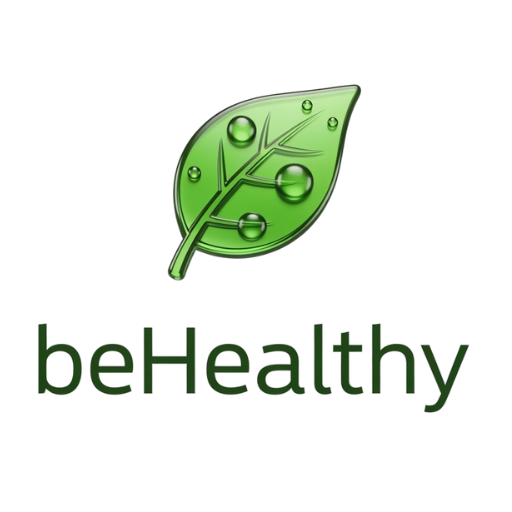
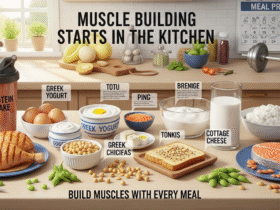
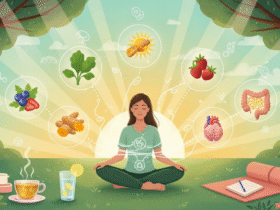

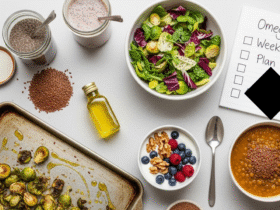
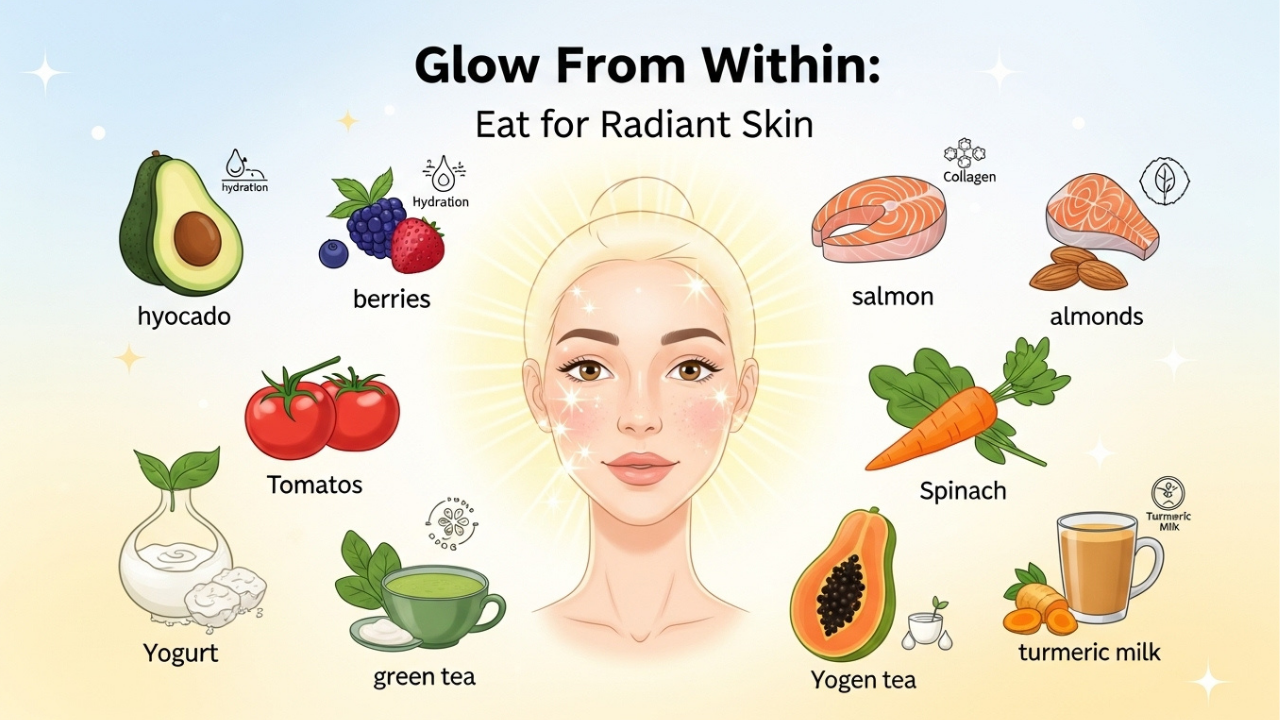
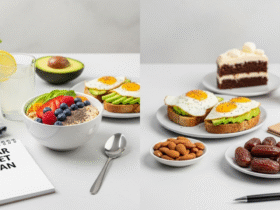

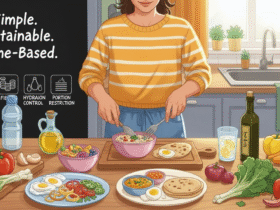



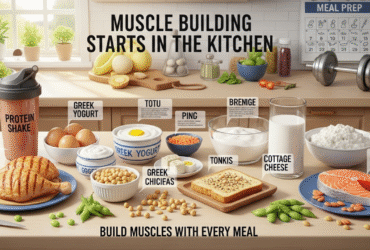
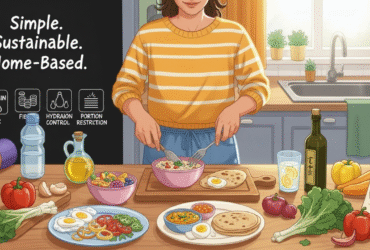
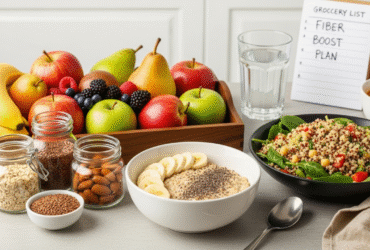
Leave a Reply